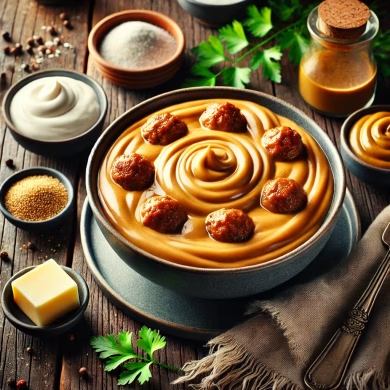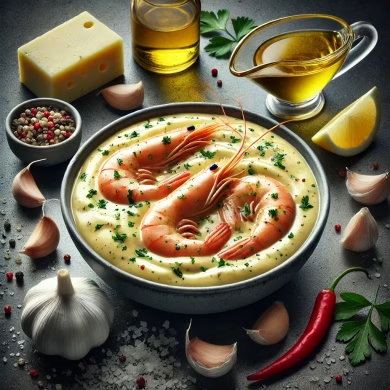What Is White Sauce?
White sauce, also known as béchamel, is a creamy and versatile staple in culinary traditions. Made from a simple combination of butter, flour, and milk, it serves as the foundation for many classic dishes. Its smooth, rich texture and mild flavor make it an ideal base for customizing with herbs, cheeses, or spices to complement various recipes.

A Brief History of White Sauce
White sauce traces its origins to French cuisine, where it is considered one of the five mother sauces. First documented in the 17th century, it became a cornerstone of French cooking, introduced by chef François Pierre de La Varenne. Over time, the sauce gained popularity across Europe and the world, evolving into a key ingredient in dishes like lasagna, gratins, and casseroles. Its adaptability ensures it remains a beloved component in both traditional and modern recipes.
Key Ingredients in White Sauce
The simplicity of white sauce belies its versatility, relying on just a few staple ingredients:
- Butter: Provides a rich and smooth base while contributing to the sauce’s creamy texture.
- All-Purpose Flour: Acts as the thickening agent, creating the perfect consistency.
- Milk: Adds creaminess and forms the liquid component of the sauce.
- Nutmeg (optional): Offers a subtle hint of warmth and depth.
- Salt and Pepper: Essential seasonings to enhance and balance the flavor.
Optional additions, such as grated cheese or fresh herbs, allow for customization to suit specific dishes.
Preparation and Cooking Time
- Preparation Time: 5 minutes
- Cooking Time: 10 minutes
- Total Time: 15 minutes
How to Make White Sauce at Home
Ingredients:
- 2 tablespoons butter
- 2 tablespoons all-purpose flour
- 2 cups milk (warm)
- 1/4 teaspoon salt
- Pinch of nutmeg (optional)
- Freshly ground black pepper to taste
Instructions:
- Melt the Butter: In a medium saucepan, melt the butter over low heat, ensuring it does not brown.
- Create the Roux: Gradually whisk in the flour, stirring continuously until the mixture forms a smooth paste. Cook for 1-2 minutes to remove any raw flour taste.
- Add the Milk: Slowly pour in the warm milk while whisking constantly to avoid lumps.
- Thicken the Sauce: Increase heat to medium and continue stirring until the sauce thickens and coats the back of a spoon.
- Season and Finish: Stir in salt, black pepper, and a pinch of nutmeg if desired. Adjust seasonings to taste, then remove from heat.
Tips for Perfect White Sauce
- Use warm milk to prevent clumping and ensure a smooth consistency.
- Cook the roux just long enough to eliminate the raw flour taste, but avoid over-browning.
- If lumps form, strain the sauce or use an immersion blender to restore smoothness.
- For extra richness, replace a portion of the milk with heavy cream.
Nutritional Information (Per 1/4 Cup Serving):
- Calories: 90
- Fat: 6g
- Carbohydrates: 6g
- Protein: 2g
- Sodium: 150mg
Frequently Asked Questions (FAQs) About White Sauce
Q: Can I make white sauce in advance?
A: Yes, it can be prepared in advance and stored in an airtight container in the fridge for up to three days. Reheat gently, adding a splash of milk if it becomes too thick.
Q: Can white sauce be frozen?
A: While it is possible to freeze, the texture may change slightly upon thawing. Stirring well during reheating can help restore its smooth consistency.
Q: What dishes can I make with white sauce?
A: White sauce is the base for many recipes, including macaroni and cheese, lasagna, gratins, and creamy vegetable soups.
Conclusion
White sauce is a timeless classic that brings creamy richness and subtle flavor to countless dishes. Whether used as a base for pasta, a topping for casseroles, or a component in soups, it offers endless possibilities. Perfect for both novice and experienced cooks, this versatile sauce is a must-have in any culinary repertoire. Embrace the art of creating this simple yet elegant sauce, and elevate your meals with its silky, satisfying taste!








Leave a reply